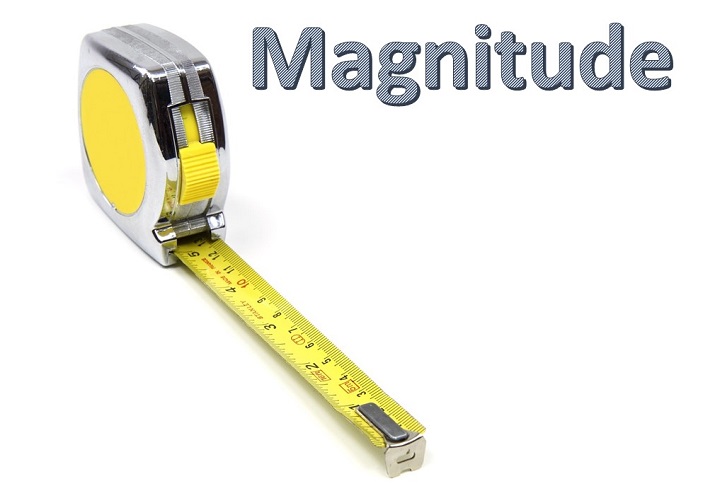Introduction
If you’ve ever heard of the word ‘magnitude,’ you might have wondered what it really means. Is it a scientific term or something that we use in everyday language? In this article, we’ll be diving into the concept of magnitude, its various types, and its applications.
What is Magnitude?
Magnitude refers to the measure of a physical quantity or a property of an object. It can be described as the size, extent, or strength of something. In the world of science and mathematics, magnitude is used to define the quantitative aspects of a phenomenon or an object.
Type of Magnitude?
There are different types of magnitude, each serving a different purpose. Some of the most commonly used types of magnitude include:
1. Scalar Magnitude
A scalar magnitude is a quantity that has only magnitude and no direction. Examples of scalar magnitudes include temperature, mass, speed, and time.
2.Vector Magnitude
A vector magnitude is a quantity that has both magnitude and direction. Examples of vector magnitudes include velocity, acceleration, force, and displacement.
3. Magnitude of a Force
The magnitude of a force is the size of the force. It is a vector quantity that represents the strength of the force in a particular direction.
4. Magnitude of an Electric Field
The magnitude of an electric field is the strength of the electric field at a particular point. It is a scalar quantity that is defined as the force per unit charge.
The Importance of Magnitude
Magnitude is important because it allows us to quantify the properties of objects and phenomena. Without magnitude, we would not be able to accurately measure or describe the physical world around us.
Applications of Magnitude
Magnitude has a wide range of applications across different fields of study. Some of the most common applications of magnitude include:
1. Physics
Magnitude is used extensively in physics to measure the properties of objects and phenomena. For example, the magnitude of a force is used to determine the strength of the force acting on an object.
2. Mathematics
Magnitude is used in mathematics to quantify the properties of numbers and geometric objects. For example, the magnitude of a vector is used to determine the length of the vector.
3. Engineering
Magnitude is used in engineering to measure the properties of materials and structures. For example, the magnitude of stress is used to determine the strength of a material.
How to Calculate Magnitude
The method used to calculate magnitude depends on the type of magnitude being measured. For scalar magnitudes, magnitude is simply the value of the quantity. For vector magnitudes, magnitude is calculated using the Pythagorean theorem.
Real-World Examples of Magnitude
Magnitude can be observed in various real-world scenarios. For example, the magnitude of a tsunami wave can be measured to determine its strength. The magnitude of an earthquake can also be measured to determine the intensity of the earthquake.
Limitations of Magnitude
While magnitude is a useful concept, it has its limitations. For example, magnitude does not account for the direction of a quantity. This can be problematic in situations where direction is important.
Conclusion
Magnitude is a crucial concept in science and mathematics that allows us to quantify and measure physical properties and phenomena. It comes in different types, including scalar and vector magnitudes, magnitude of a force, and magnitude of an electric field. Magnitude has numerous applications in various fields, such as physics, mathematics, and engineering. It enables us to calculate the properties of objects, measure the strength of forces, and describe natural phenomena. While magnitude is a useful concept, it has its limitations, such as the lack of direction information. Overall, understanding magnitude is important for anyone interested in exploring the physical world.
FAQs
1. What is the difference between scalar and vector magnitude?
Ans. Scalar magnitude is a quantity that has only magnitude and no direction, while vector magnitude is a quantity that has both magnitude and direction.
2. What is the magnitude of force?
Ans. The magnitude of a force is the size or strength of the force in a particular direction.
3. How is magnitude used in physics?
Ans. Magnitude is used in physics to measure the properties of objects and phenomena, such as the strength of forces acting on an object.
4.What is Pythagorean theorem used for in calculating magnitude?
Ans. The Pythagorean theorem is used to calculate the magnitude of a vector quantity.
5. What are some real-world examples of magnitude?
Ans. Magnitude can be observed in various natural phenomena, such as the strength of a tsunami wave or the intensity of an earthquake.

